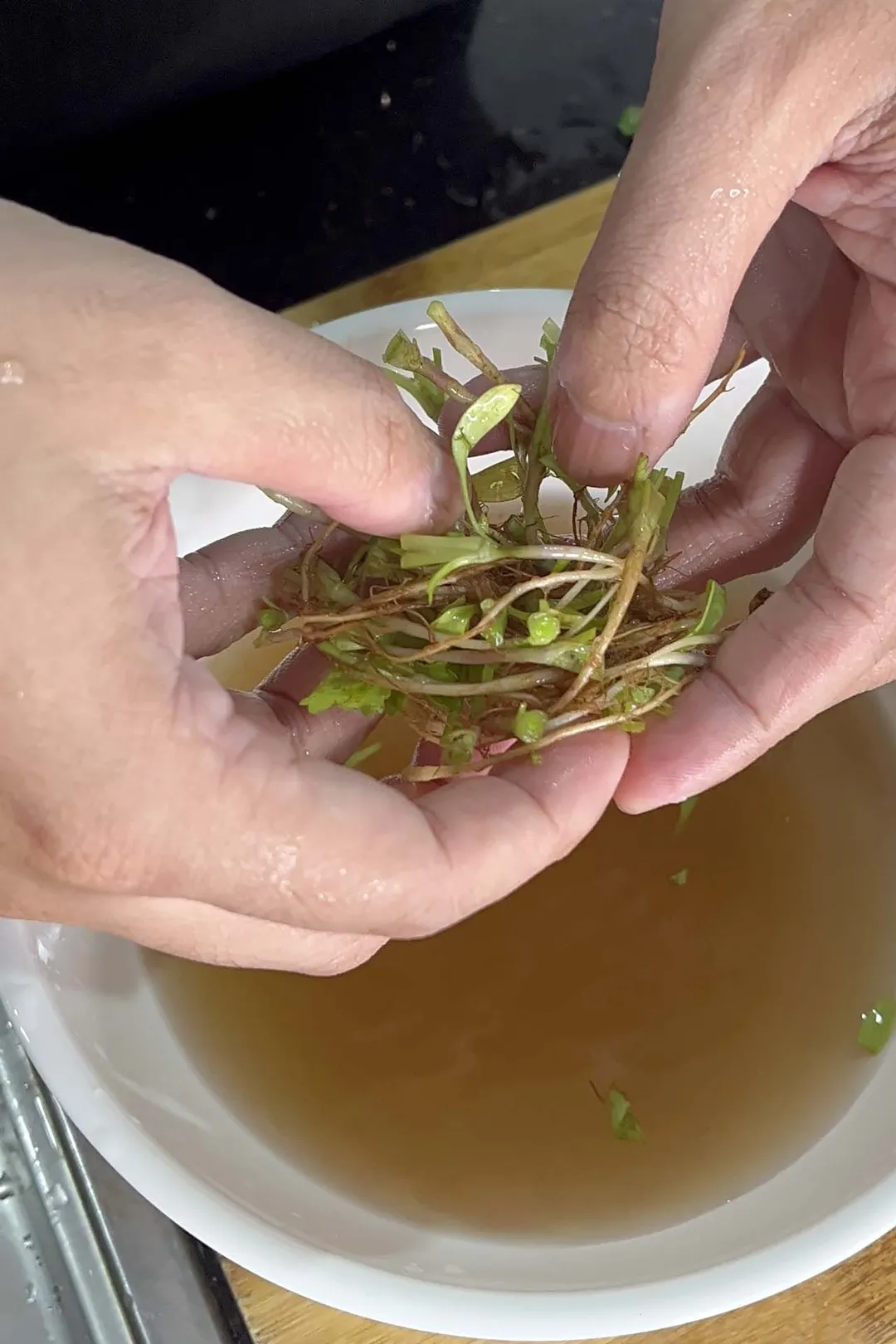In this article, we’ll show you how to cut cilantro properly.
What Is Cilantro?
Even if you haven't bought it yourself, high chances are you've had cilantro before. It’s that green, earthy herb you see on top of guacamole or salsa, especially on most Asian dishes. Asia and Southern Europe are where it was native, before spreading to other countries.
Compared to parsley, its leaves are quite larger and don’t form clusters:
Its aroma is very fresh, earthy, and quite unforgettable if you ask me. It's really strong and doesn't need to be cooked to become fragrant. People usually chop it finely with green onion and sprinkle it on top of soups, noodle soups, fried rice, stir-fried dishes, you name it. In Asian cuisines, it's almost a kitchen must-have.
All parts of the cilantro are usable, even the roots. The green leaves and stems err more on the fresh side, suitable to top dishes with. The roots, however, are earthier, and really concentrated in aroma, and in Thai cuisine, they're usually preserved for making stocks.
The roots, however, tend to come with dirt clinging so tight that a brief rinse just won't do. You’ll need to scrub them well before using them.
How to Clean
Cilantro sold in supermarkets tends to have the roots chopped off already. Oftentimes it comes clean, vibrant, and free of dirt, so after just one quick rinse it's ready to use.
But if you're fetching them from the market, high chances are they haven't. You need to chop the roots of the stem and clean the two parts separately.
Gather a bunch of cilantro, chop the roots off, and put both into different washing basins/bowls.
Cleaning the Stems (and Leaves)

You should be gentle when dealing with these two. Swishing them around with your hands so the dirt falls off, pick out the ones that turn yellow or rot, and changing the water. Soak them in salted water for about 5 minutes, drain them, and they're clean.
Cleaning the Roots

For the roots, you want to get a little rough. Scrub them with your fingers until free of dirt, then give them another rinse before storage. Unlike the leaves and stems that are often served raw, the roots needn't be soaked in salted water.
How to Dry
Did you mean drying cilantro using heat? This article will have you covered.
Be put in storage or used right away, cilantro needs to be free of moisture first. Damp cilantro tends to rot much quicker, and the excess moisture just ruins the texture of whatever you’re putting it into.
If you've got a vegetable spinner, put them in and they'll be dry after several pulses. When prepping for storage, we often take a step further and absorb the moisture with paper towels, like so.

How to Chop
Gather a bunch of cilantro on the cutting board with your hand, and with the other, chop the cilantro with a rocking motion. The slices should be just 1/4" apart for a rough chop, and 1/8" apart if you need them minced.
It's okay to run the knife over them several times to get a really fine texture.
Then, scrape them off the board with your knife. They should stick tight to your cutting board. Carefully, run your finger on the side of the knife to get it all into a bowl, like so:

We don't like the texture of cilantro out of a food processor. A poor-quality machine doesn't chop it evenly, and the better ones just crush it. We only do it when we need it crushed to add to meatballs or something. But then again, a mortar and pestle also do the job and are much easier to clean.
Notes on Storage
After cutting the cilantro should be used right away. It technically keeps in the fridge for about 4 days, but its quality degrades with time: softer, mushier, darker, and eventually rotting. To keep it for longer, keep it in the fridge whole or chop and freeze.
Check out this article for more information on preserving cilantro.

Luna Regina
Writer, Author
